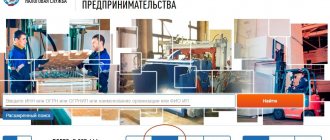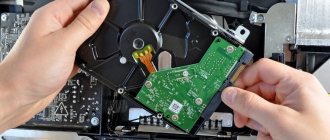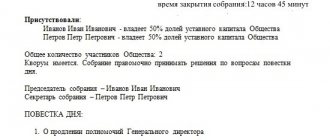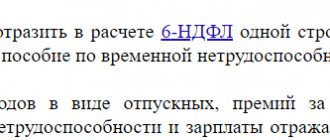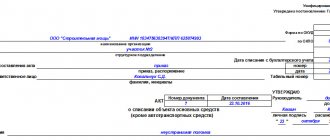Form of the act
Typically, companies independently develop the form that will be used in a given situation.
Naturally, it must be approved by the manager. Most templates are designed according to the example of the TORG-16 form. However, this is not mandatory, because this requirement was abolished back in 2013. You also need to know that there are types of write-offs for which a specific form should be used. We can say that its choice largely depends on the purpose for which the document is being drawn up. In essence, the act is a statement indicating the material assets that were written off, the reasons and the date. Regardless of what form was used to draw up the document, its standard form must contain the following data:
- place and date of registration;
- list of commission members;
- characteristics of materials being written off;
- expert opinion;
- reasons for write-off;
- signatures of responsible persons and commission members.
( Video : “Errors when writing off materials in 1C”)
Act of writing off toys in kindergarten
The form of this document is approved by Order No. 52n[2] and is drawn up upon receipt of material assets (including fixed assets and inventories) to the institution.
In addition, the accounting policy of the institution may establish the obligation to draw up an act of acceptance and transfer of non-financial assets (f.
0504101) upon acquisition and gratuitous receipt of such assets. It must be drawn up without fail when transferring non-financial assets between institutions, between institutions and organizations (other legal holders), including when securing the right of operational management.
Write-off procedure
Regardless of the reasons why there is a need to formalize the write-off of materials, you first need to convene a team of specialists who will act as a commission. They will be the ones who will decide whether a write-off is really necessary. The employees responsible for the materials in question must be present here. Often these are financially responsible persons. Often the commission includes heads of structural divisions, accountants and other managers. A specially created group must familiarize itself with the materials, their technical condition, defects, malfunctions and damage. Having recorded all the characteristics, authorized persons sign the act, thereby confirming their consent to write-off.
( Video : “The nuances of writing off materials”)
Quite often in large corporations, the write-off procedure is carried out according to clear instructions that are developed specifically for these purposes. You need to understand that there must be good reasons for writing off materials. Moreover, they must be documented. Without this, the write-off procedure does not even begin. Often additional documents are attached to confirm the need to write off materials:
- Reports on products produced for a specific period;
- Documents confirming the fact of consumption of materials above the planned norm;
- Reports from responsible employees on the use of materials;
- Other accounting and financial documentation.
Reasons for writing off materials in the act
After the materials are written off, the financial condition of the company changes. Naturally, such a business transaction must be documented. One of the main points in the drafted act is to indicate the reasons why there was a need to write off materials. Naturally, the reasons must be adequate and compelling:
- transfer to a unit;
- damage to materials;
- the expiration date has expired;
- use of materials for equipment repair;
- sale;
- change in original characteristics.
This is not a complete list of reasons why it may be necessary to prepare this document. Often the reasons are determined by the characteristics of the material. For example, soft materials often fail due to natural wear and tear.
It is also worth noting that the created commission is obliged not only to confirm the legality of the write-off, but also to perform some other work. For example, specialists inspect materials to determine their cost. If they were damaged, the persons responsible for this are identified. Then the specialists must correctly draw up the write-off act and submit it to the head of the organization.
Types of acts of write-off of valuables
Accountants know that the legislation of the Russian Federation provides for several unified forms for writing off inventory and materials. Thus, for writing off spoiled, expired, defective goods and food products, the TORG-16 form is provided. Order No. 52n of the Ministry of Finance of Russia dated March 30, 2015 introduced the form of the Act on the write-off of inventories. For fixed assets of an enterprise, the Ministry of Finance has developed unified forms OS-4 (one object), OS-4a (motor transport), OS-4b (group of fixed assets objects).
Is it necessary to use these forms to write off valuables for private organizations and individual entrepreneurs? From January 1, 2013, such forms are not mandatory for use. The manager has the right to independently determine the form of documents used to document the facts of economic life. At the same time, in order not to raise questions from the tax authorities, acts of write-off of valuables must contain a number of mandatory details.
How to draw up an act for writing off materials
The main feature of the document is to correctly enter all the data into it, without allowing any distortions.
For example, information about the company that has the materials on its balance sheet must be present here. In addition, all members of the created commission, their passport details and positions should be described in detail. Naturally, the commission is created after the head of the company issues a separate order. A senior specialist is selected. Particular attention should be paid to the column intended to indicate the materials being written off. If there are several of them, you can use a list for better perception. The description must be such that there are no difficulties in identifying the material. Opposite each material its cost is indicated. At the bottom of the document you should write down the total cost of all materials being written off. The reason why it was necessary to draw up this document is also noted.
In specially designated lines, each employee who is part of the commission is required to certify the document with his signature. This suggests that experts fully agree with the information provided. After this, the document is submitted for signature to the director of the company. After affixing the signatures, the act receives legal force. Based on it, accountants write off materials from the balance sheet of the enterprise. Naturally, such information is also displayed in tax accounting.
The document must have one copy. It is he who comes to the disposal of the accounting department, where it is further processed and the materials are written off from the company’s balance sheet. However, any interested party, which includes members of the commission, has the right to ask for a copy of the document for themselves. There is no urgent need to put stamps on the document. Information about the act is entered into a special journal of the enterprise, since it is an internal turnover document.
Write-off of containers
Quote: CHAPTER 5 FEATURES OF ACCOUNTING FOR CONTAINERS 84. Containers are a type of inventory intended for packaging, transportation and storage of products and other material assets. The container under the products (goods) can make a single or multiple turnover (reusable container). 85. Regardless of the terms of purchase, packaging is accepted for accounting at actual cost. The actual cost of the purchased packaging (except for the packaging received with the delivered products) is determined by summing up all the costs of its purchase and delivery to the organization or the costs of its production. 86. The cost of disposable packaging purchased together with inventories and included in the cost of these inventories is not reflected separately in accounting. 87. The presence and movement of all types of containers (except for containers used for the technological production process and for household needs), as well as materials and parts intended for the manufacture of containers and their repair, are reflected: on account 10 “Materials”, subaccount 4 “ Containers and packaging materials" - organizations, with the exception of organizations engaged in trade and trade-production activities; on account 41 “Goods”, subaccount 3 “Containers under goods and empty” - by organizations engaged in trade and trade-production activities. 88. Containers used to carry out the technological production process (technological containers) and for household needs are accounted for on account 01 “Fixed assets” or on account 10 “Materials”, subaccount 9 “Inventory and household supplies”, depending on whether the specified containers for fixed assets or individual items as part of assets in circulation. 89. Items intended for additional equipment of cars, barges, ships and other vehicles in order to ensure the safety of shipped products (goods) do not belong to containers and are accounted for on account 10 “Materials”, subaccount 1 “Raw materials and materials”. 90. Acceptance of containers from suppliers and buyers, from container shops and areas of one’s organization, release of containers to third parties and to production for packaging products, as well as movement of containers within the organization are documented with primary accounting documents. 91. For a supplier of products (goods), if the cost of packaging is included in the sales price of products that are packaged in a given container, the actual cost of packaging is written off from the credit of container accounting accounts in: debit account 20 “Main production”, if containers are used for packaging products in production divisions of the organization; debit account 44 “Sales expenses”, if containers are used for packaging goods and products in the organization’s warehouses. 92. If the container is manufactured directly in the organization, then the costs of its production are written off from the credit of cost accounting accounts to the debit of accounts 10 “Materials”, subaccount 4 “Containers and container materials”, 43 “Finished products” at the actual cost. Costs for the manufacture and repair of containers are reflected: by organizations for which the manufacture and repair of containers are the subject of their activities - on account 20 “Main production”; other organizations - on account 23 “Auxiliary production”. Advertisement upon shipment (vacation). 94. The received returnable packaging is accounted for by the supplier at the actual cost by debiting account 10 “Materials”, subaccount 4 “Containers and packaging materials” in correspondence with the credit of account 60 “Settlements with suppliers and contractors”. If there is a difference between the actual cost of packaging and its cost specified in the contract, the specified difference is written off to financial results. 95. For the buyer, containers received from suppliers along with products (goods) are reflected in the accounting records: in the debit of account 10 “Materials”, subaccount 4 “Containers and packaging materials” and in the credit of account 60 “Settlements with suppliers and contractors” by price specified in the contract, if the packaging has been paid to the supplier or is subject to payment separately; by the debit of account 10 “Materials”, subaccount 4 “Containers and packaging materials” and the credit of the accounts for accounting for financial results, if the packaging to the supplier is not paid separately, assessed at the net realizable value in the case when the packaging is intended for sale, or at the price of possible use . 96. The buyer returns the containers to the supplier at the prices stipulated in the contract from the credit of account 10 “Materials”, subaccount 4 “Containers and container materials” to the debit of the settlement accounts. 97. Reusable packaging that is the subject of a pledge (hereinafter referred to as the pledge container) is accounted for at the pledge value. The difference between the actual cost and the collateral value of the container when purchased from the organization is written off to the financial results. 98. The buyer received collateral containers are accounted for on account 10 “Materials”, subaccount 4 “Containers and packaging materials” or account 41 “Goods”, subaccount 3 “Containers under goods and empty” at the collateral value. The costs of the buyer of products for cleaning, rinsing and repairing deposit containers received from suppliers along with the delivered products are included in the transportation and procurement costs of this group of materials. If, in accordance with the terms of the agreement, the repair of the collateral container is carried out by the buyer, then the costs of these repairs are reflected in the debit of the financial performance accounts and the credit of account 23 “Auxiliary production” or 44 “Sales expenses”. 99. The costs of cleaning, washing and repairing containers that are not subject to reimbursement by the buyer are reflected by the supplier in the debit of account 23 “Auxiliary production” or 44 “Sales expenses”. The costs of repairing the deposited containers, which are subject to reimbursement by the buyer, are reflected in the debit of the financial results accounts and the credit of account 23 “Auxiliary production” or account 44 “Sales expenses”. 100. The supplier's deposit value of the container, as well as sanctions for failure to fulfill obligations to return the deposit container if the buyer fails to return it, are included in the financial results. 101. The costs of delivering returnable packaging are reflected in accounting: by the supplier (package recipient) in the debit of account 44 “Sales expenses” in case of reimbursement to the buyer (package issuer); by the buyer in the debit of account 44 “Sales expenses”, if the contract stipulates that these costs are incurred at the expense of the buyer. 102. Amounts paid (to be paid) by organizations - recipients of pledged containers to organizations engaged in trading activities, in excess of pledge prices for containers to reimburse the costs of collecting and storing containers, by the supplier organization are reflected in the debit of account 44 “Sales expenses” and the credit of the account 60 “Settlements with suppliers and contractors.” 103. The cost of containers that have become unusable due to wear and tear is reflected in the debit of the financial performance accounts and the credit of account 10 “Materials”, subaccount 4 “Containers and container materials”. 104. Containers that have become unusable before the end of their service life as a result of their damage are written off from the credit of account 10 “Materials”, subaccount 4 “Containers and packaging materials” to the debit of account 94 “Shortages and losses from damage to valuables”. Post of the Ministry of Finance133 from 12/11/10
Material recycling act form C-7
A situation often arises when an enterprise has some specific components on its balance sheet. But there is a need to make certain materials from them. In this case, it becomes necessary to draw up a processing act, which indicates the characteristics of the received material, notes the presence of defects, etc. Naturally, signatures in the document are affixed after a thorough inspection of the material and determination of the clear amount of materials intended for processing.
Sample
Form 0504230. Act on write-off of inventories
Also on the first page, in the upper right corner, there is a separate space for the director’s signature with the date of signing.
Directly below it is a miniature table containing the codes. In the document form available for download on this page, the form code for OKUD is immediately marked - 0504230. When filling out, all that remains is to enter the date of write-off of inventories, the code for OKPO and KPP. No matter how many pages there are in a specific act on the write-off of inventories, it must contain a header, a main tabular part and a conclusion.
No matter how many pages there are in a specific act on the write-off of inventories, it must contain a header, a main tabular part and a conclusion.
At the top of the act it is always written:
Act of writing off materials that have become unusable
There are a huge number of reasons why materials can lose their original characteristics. Naturally, they are not suitable for further use. This may be the fault of those responsible, or natural wear and tear. If expensive materials are written off, such a decision can be made by the director, chief accountant, or head of the department. The fact that the materials are unsuitable is also confirmed by the commission members. In addition, the cost of each material and the total amount for which the write-off occurs is indicated here. It is also necessary to indicate in what quantity the material is written off. At the discretion of the inspectors, additional information can be indicated in the document. Usually there are special graphs for this.
Sample
Certificate of write-off of consumables
The form in which this document is drawn up is developed by firms independently.
However, information that should be present in the primary documents should be included here. It must be remembered that on the basis of the write-off act, accounting employees write off the costs of materials that were spent for certain purposes. As in any act that is intended to be copied, there must be information about the members of the inspection team, their conclusion, and characteristics of the materials. In addition, the reasons why the write-off occurs are also indicated. It is worth noting that such an act is drawn up not only to indicate this information in reporting documents. A document confirming the write-off of consumables allows company managers to track exactly how materials are consumed.
Purpose of materials consumption
When creating this document, free form is used. However, there must be information here that is mandatory. This is data about the department that used the materials. As for the purpose of the expenses, there are certain inaccuracies.
On the one hand, no rules indicate that the absence of a spending purpose in a document is considered a violation. But on the other hand, you need to understand that the act is drawn up after the material has been used. It is logical to assume that the goal should be clear. Accordingly, the field intended to indicate the purpose of material consumption should be filled out.
If you specify a specific purpose, it will be much easier to prove expenses. If you do not indicate the purpose, the document indicating the write-off of materials is impersonal. Based solely on its contents, it is impossible to determine for what work and in what quantity the materials were used.
Sample
The procedure for withdrawing inventory items
Actions to write off valuable inventories must be carried out in the presence of a special staff of the organization. This role can be played by the chief accountant, storekeeper, and in some cases, a representative of the sanitary and epidemiological station. The document must be approved by the head of the enterprise and signed by all employees who are members of the commission, as well as by the financially responsible person.
In addition to the actions listed above, it is the manager who must determine the source by which the goods will be written off (cost, profit, etc.). In addition, the act must indicate complete information about the product. Then, without fail, check the compliance of the cost, batch and additional characteristics.
In addition, you need to make sure that all specified valuables have already been issued from the warehouse according to the invoice. This information is necessary in order to eliminate discrepancies in tax and accounting data.
The act of writing off inventory items, as a rule, is drawn up in three identical copies. The first remains in the accounting department, the second is stored in the documentation of the structural unit, and the third remains with the authorized person. As mentioned above, if inventory items are obsolete, the seizure act is not issued at all.
Act on write-off of materials for equipment repair
Quite often, if any equipment at an enterprise breaks down, they repair it themselves. In addition, repair work can be carried out by a contractor. Often, materials that are on the organization’s balance sheet are used for this purpose. Naturally, after repair work is completed, the materials used must be written off. In this case, a corresponding act is drawn up.
Purpose of material consumption
When filling out the act, it is recommended to indicate detailed information in this column. For example, equipment was reconstructed and modernized. This can be any other action aimed at increasing the operational life of the equipment and improving its technical characteristics. The document should indicate not only the purpose, but also the specific materials that were used in this repair.
Sample
Reasons and grounds for writing off material assets
In addition, often representatives of the organization prefer to use the MB-8 form previously used in the general procedure. This is largely due to the fact that it is very clear and comfortable in structure, and also includes all the necessary information, which allows you to avoid “thinking through” the composition of the documentation.
The act does not have a unified, standard template, so it can be drawn up in free form or according to a template developed within the organization, in accordance with the characteristics of its activities and needs.
The basis for writing off material assets in the cases considered is also the write-off act (for details, see
Before writing off material assets, the enterprise must conduct an inventory of property and enter its results into the relevant documents.
Who signs the act of writing off materials?
To confirm the legality of writing off materials that are registered with the organization, a special commission is formed. Usually its composition is appointed by the head, this includes department managers, the chief accountant, and employees responsible for these materials. If particularly complex materials are to be reviewed, a highly specialized specialist should also be present. The commission is formed by order of the head. In addition, other company employees may be part of the inspection team. After the inspection, all members of the commission must sign the act. After this, it is submitted for signature to the head of the organization.
Correct accounting of pallets on which products are shipped
Quote (Natalie_78): the point is. that I carefully read section 3 of the Order, where it is written from the 10th account, but I did not understand whether it is possible to leave the pallets at 41, or whether they need to be transferred to the 10th account. Good afternoon The pallets on which your organization ships finished products can be classified as non-returnable containers in accordance with Section 3 of the Order of the Ministry of Finance of the Russian Federation dated December 28, 2001. The cost of non-returnable containers is taken into account as part of the costs of main production if packaging occurs in a production department, or as part of selling expenses if the products are packaged after they are delivered to the warehouse at actual or accounting prices. This is stated in paragraph 172 of the Order of the Ministry of Finance of the Russian Federation dated December 28, 2001: 172. In cases where the cost of the container is included in the selling price of the product that is packaged in this container, i.e. the buyer does not pay separately (in addition to the cost of the product), the cost of such containers is included: a) as a debit to the “Main Production” account (i.e., included in the production cost of products), if packaging of products in containers is carried out in the production departments of the organization; b) to the debit of the “Sales Expenses” account, if the products are packaged in containers after they are delivered to the finished goods warehouse. The cost of the containers specified in this paragraph is debited from the credit of the “Materials” account (sub-account “Containers and container materials”), if the containers were accounted for on the specified account. If the container is manufactured directly in the organization, then the costs of its production are preliminarily written off from the credit of cost accounting accounts, as a rule, the “Auxiliary Production” account to the debit of the “Materials” account (sub-account “Containers and container materials”) at actual cost or accounting prices ( paragraph 166 of these Guidelines). Accounting for packaging in account 41 “Goods” is carried out by trading enterprises; if the cost of non-returnable packaging is not indicated as a separate line in the shipping documents, but is included in the price of the transferred goods, then it can be taken into account in account 41 “Goods”, and then written off as a debit to account 44 “ Selling expenses." A manufacturing enterprise (in your case), in my opinion, should take into account containers on account 10 “Materials”, and then write them off to account 20 or 44. That is, it is necessary to transfer pallets to account 10 “Materials”


